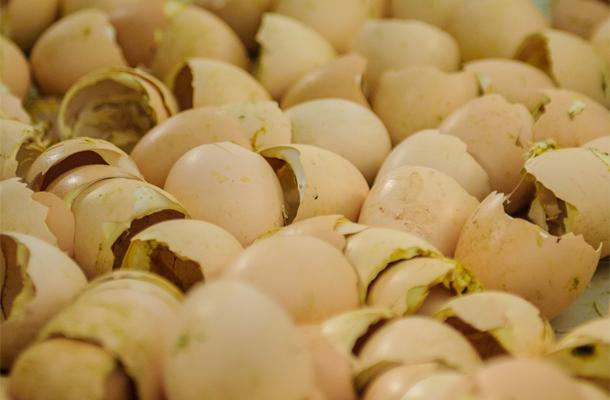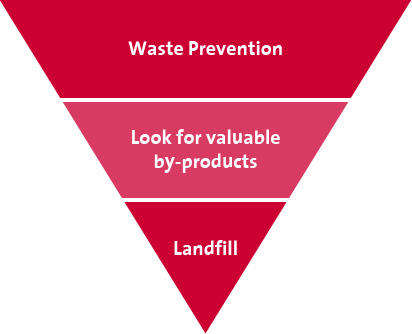Waste or by-product? Replacing cost with value through effective hatchery waste management
Tags: Washing and waste handling | Whitepaper
, 3 April 2015

The hatchery’s main goal is to produce the maximum percentage of good quality day-old-chicks from all the hatching eggs received.
Inevitably this process generates a secondary stream of material that as ‘hatchery waste’ is inherently worthless and perhaps even a generator of cost for its disposal, but with the potential to become a by-product can deliver value and a source of additional revenue for the hatchery.
In either case, both the terms “waste” and “by-product” indicate a material of secondary importance and, as with every production process, we can apply the ‘Pyramid of Waste’ principles in the hatchery.
At the top of the pyramid, our first aim is to prevent waste. Second, if waste is generated, we try to turn it into a (by-)product with a value. Finally, without a value option, we must discharge waste against costs or in the worst case, in an unsustainable manner, for example to land-fill. This is usually the last option.
Dealing solely with egg-related waste for the purposes of this article, we can apply the pyramid to the modern hatchery in the following ways:
Waste prevention
Since the amount of (solid) waste generated in the hatchery depends on hatchability, this is the key focus for waste reduction. Optimizing breeder farm and hatchery management practices, including the creation of ideal incubation conditions, will substantially increase hatchability and therefore reduce waste.
While higher hatchability does produce more empty egg shells, these are usually easier to dispose of than (full) unhatched eggs, which naturally comprise a much higher volume or weight.
Identify valuable by-products
So called ‘clears’, consisting of infertile eggs and eggs containing early-dead embryo’s and removed during candling, may represent a by-product with value. Depending on local regulations, ‘clears’ can be sold as a by-product, either for human consumption (for example to bakeries) or for animal feed. In this case, buyers may stipulate that embryo’s beyond a certain stage (for example blood ring) are not included and that rotten eggs (= bacterial contamination) are removed.
When clears are not removed prior to hatching (i.e. during transfer), they migrate from one waste category to another, to become ‘unhatched’ rather than clears.
Unhatched eggs can still have a value, for example in the production of biogas or composting in combination with the floor litter from chicken houses, or even as animal feed after passing through a rendering plant.
In most hatcheries, empty eggshells are combined with unhatched eggs and 2nd class chicks into a single waste stream. However when collected and separated the eggshells, depending on local regulations, may be sold and used as fertilizer for Calcium-supplementation.
Discharging against costs
As one of the least sustainable solutions for dealing with hatchery waste, the discharge of (organic) waste to landfill is becoming increasingly difficult in many countries and is usually a last option.
While the focus when forced to discharge waste is largely on reducing costs and therefore finding the cheapest solution, the impact of waste on the environment cannot be ignored.
Process knowledge is crucial to optimisation – and performing a hatchery-specific waste analysis is a valuable tool not only for identifying more cost-effective and sustainable hatchery waste management processes – but potentially for revealing new revenue streams for the hatchery.
Advice:

- Create awareness of the potential to extract value from waste among hatchery personnel
- Optimise the incubation process for increased hatchability
- Identify and separate hatchery waste into saleable by-products, waste that can be discharged sustainably at zero or minimal cost, and true hatchery waste.
- Look for sustainable ways to discharge true hatchery waste. While there will be a cost attached – your hatchery will be minimising its cost to the environment.
- Investigate ways in which specific waste streams may be combined with other sources of waste in the integration (farm, slaughterhouse, etc.) or other existing solutions (e.g. a local bio-digester).
Written by Sander Koster
Process Improvement Manager
I welcome your feedback on this article - and if you require any additional information, please don't hesitate to contact me.